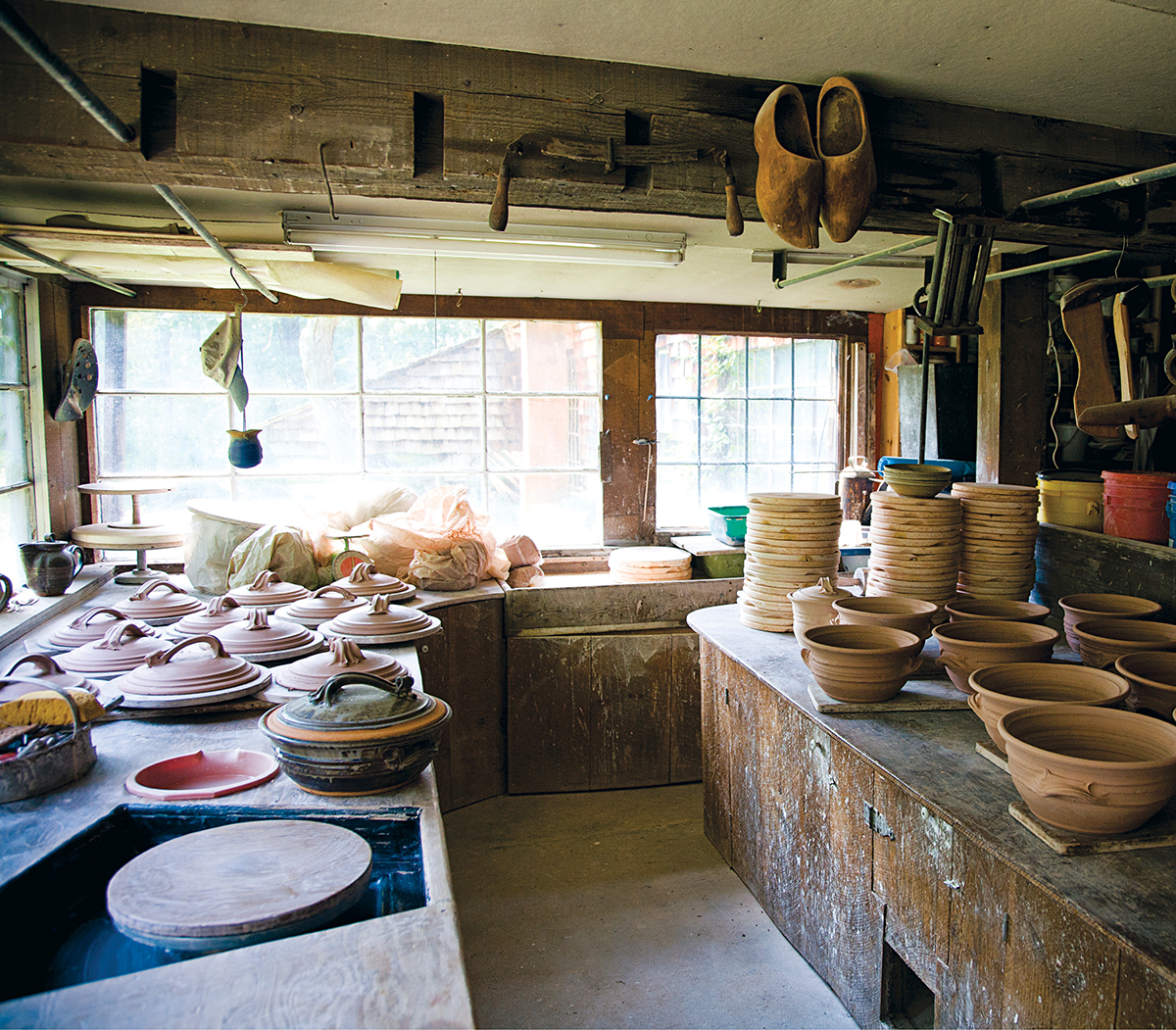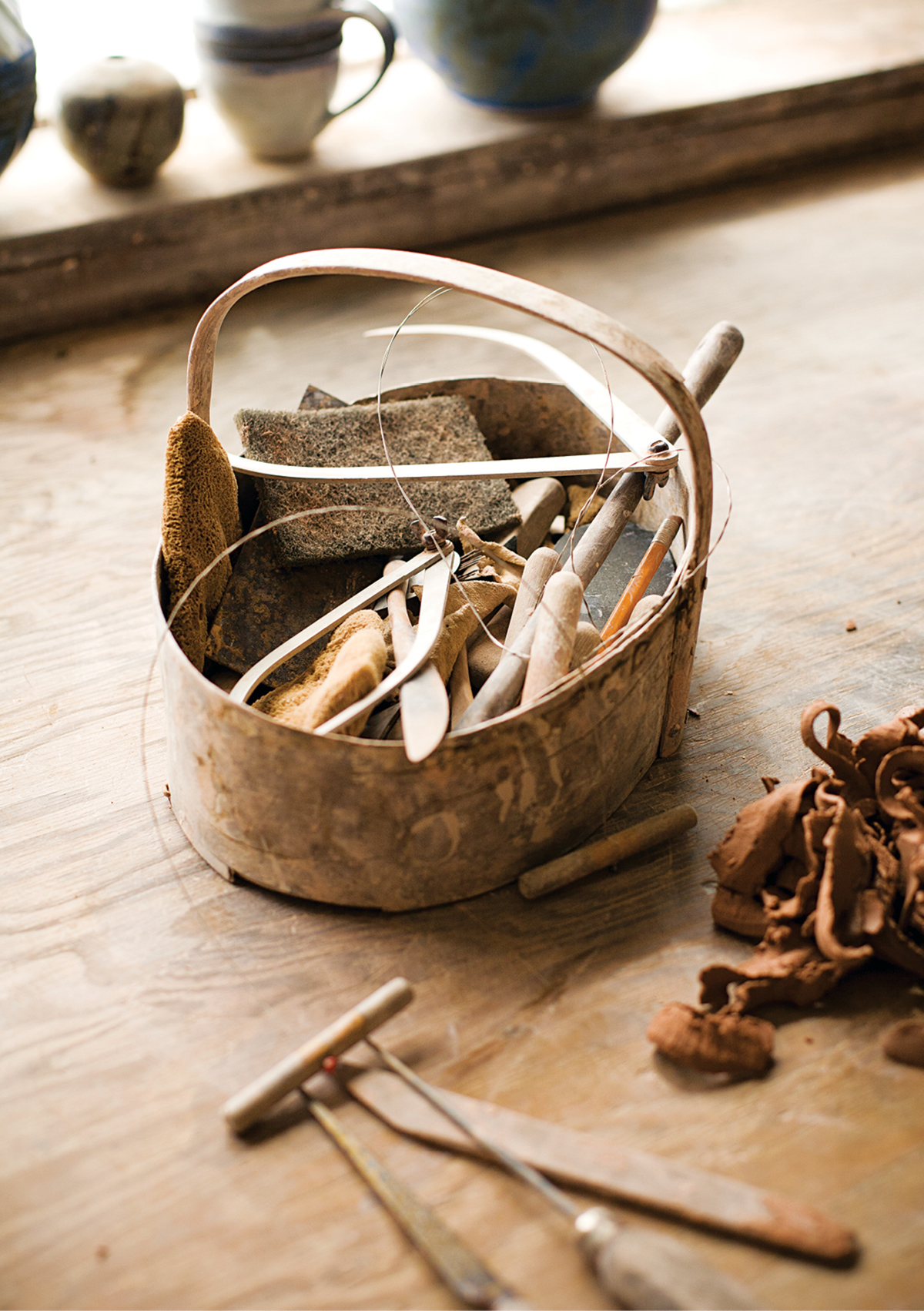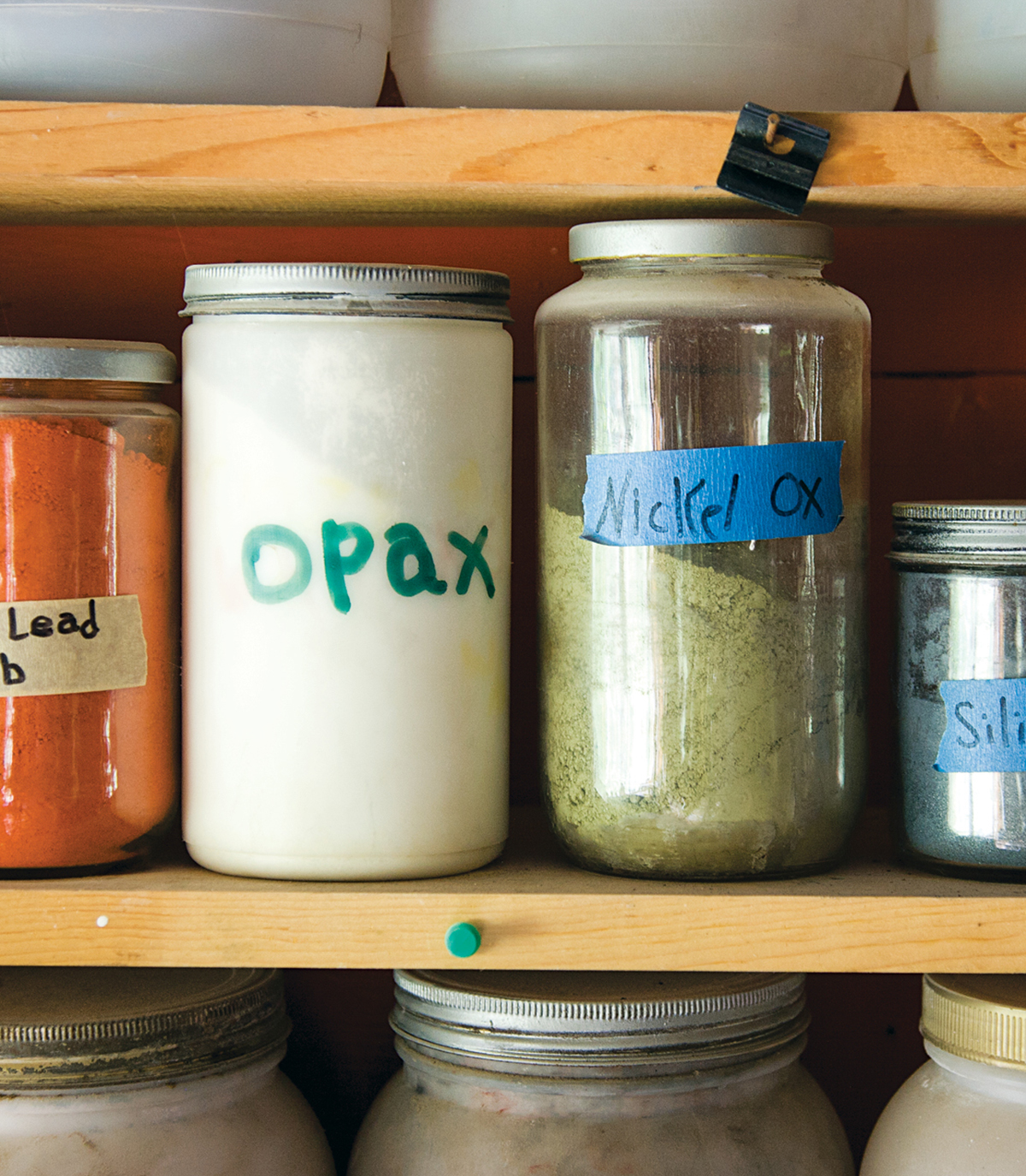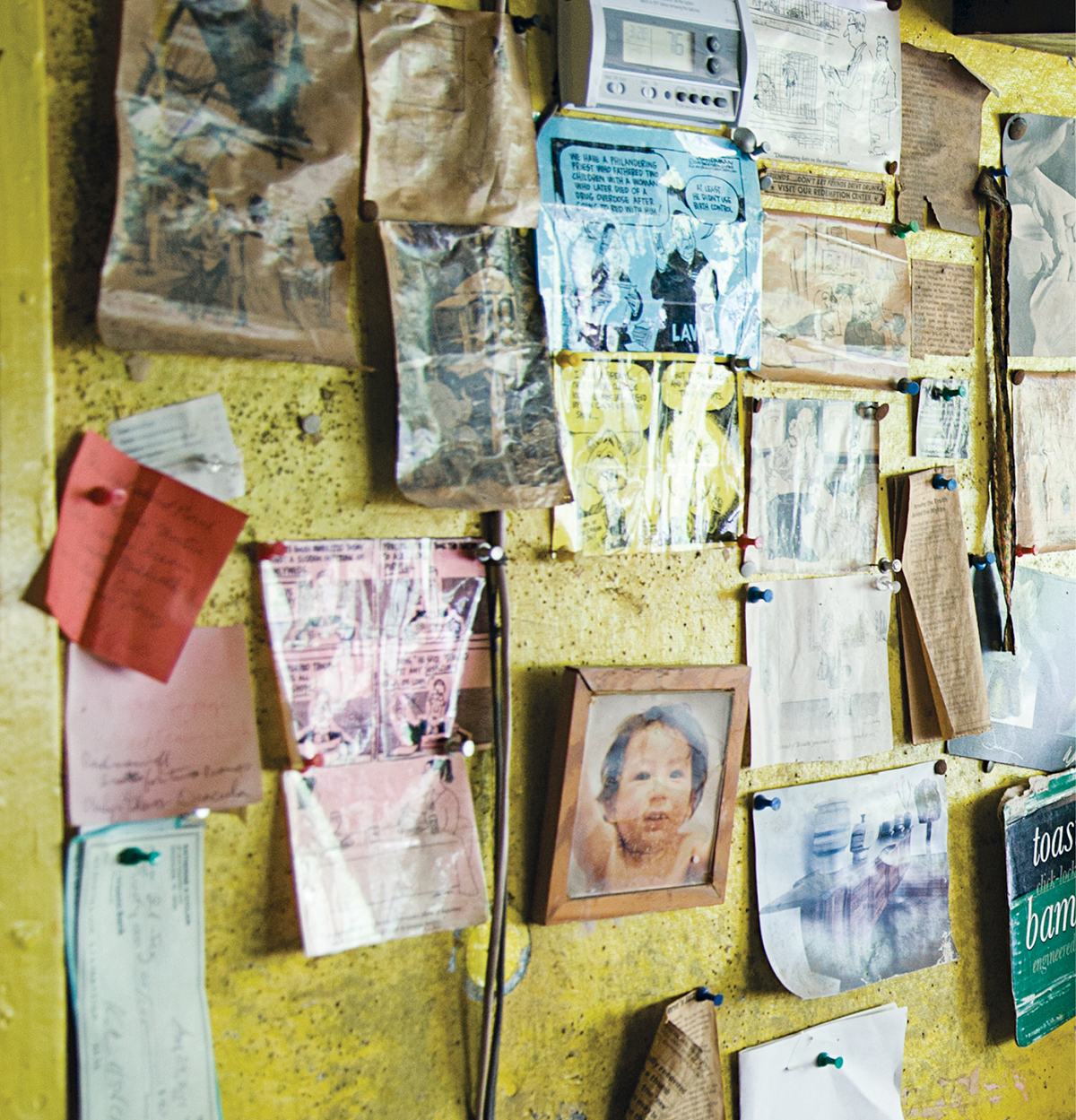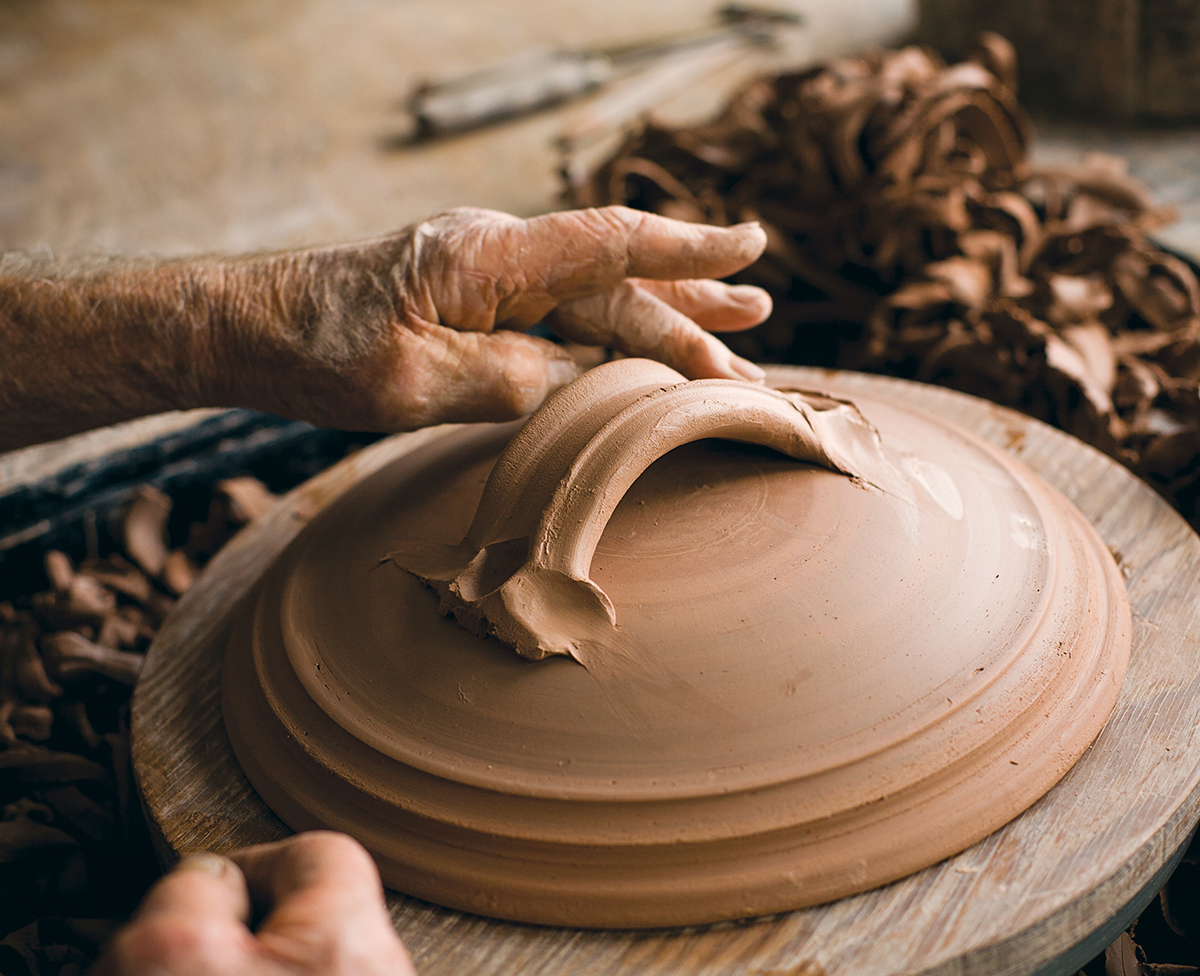The Artisan Next Door: Fired Up
Bill Sax is happy to give out recipes, whether for the pistachio-grapefruit tart cooling on his counter or for a 1,500-pound batch of the “flameware clay” that he developed back in 1954. For DIY types, here’s the latter: “I just throw in ingredients and grind it up for 20 minutes. It’s like making a cake batter using a Cuisinart,” Sax says.
The South Hadley resident is one of a handful of potters nationwide who make functional clay cookware — casseroles, skillets, teapots—that can transition from stovetop and oven to table. His pieces — which run from $22 for a small skillet to $300 for a large casserole — cut down on dishwashing, sure, but they also lend considerable panache to a lasagna. What’s more, they can last for decades — unless they hit a tile floor, that is. To complement his pieces, Sax also crafts sturdy, vibrantly hued porcelain tiles and deep stoneware sinks.
Whether functional or decorative, his handcrafted vessels have a timeless appeal. Like ancient pottery, they’re weighty and bear their maker’s mark; handles twist like ribbons, suggesting the flexibility of damp clay, and sport grooves made by fingertips. The drips and washes of the glazes call to mind cresting waves or aerial maps of shorelines, revealing the vagaries of a deliberately imperfect art.
A collection of Sax’s versatile flameware. The playfully shaped vessels are spice roasters, which he often uses to toast sesame seeds.
Sax, 78, received his M.F.A. in pottery from the School for American Craftsmen at the Rochester Institute of Technology, where he studied with the Bauhaus-trained ceramicist Frans Wildenhain. “It was the physicality of it that I liked,” he says. “And the lifestyle also appealed to me. I’d had jobs before, and I quickly learned that going to work in a suit and tie was not going to make me happy.”
And Sax is most content when sitting at the wheel, molding pots with his clay-covered hands. The rest of his time is spent mixing materials, applying glazes, and, of course, firing his work. After cooking the pieces at a low heat, he glazes them, then re-fires them at a sizzling 2,350 degrees until the colors fuse seamlessly with the clay.
Packing his handmade firebrick kiln requires extraordinary space-planning know-how. Skillets, plates, and casseroles are stacked tightly within a flexible system of shelves and bricks, creating an intricate ceramic tower. Though he aims to fill it to the brim, heat distribution is an important factor. “This part of the kiln is cooler than this part,” Sax explains as he traces the oven’s heat current with a sweep of his arm. “Certain glazes get certain effects from temperature. We’re only talking about a 150-degree difference, but that can have a big impact on a glaze’s final color. So I place pieces in precise spots, hoping to achieve certain effects.”
As he stands back to look at his kiln, considering the arrangement and the alchemy it creates, he muses, “My wife likes those Sudoku puzzles. Packing the kiln may be my Sudoku.”
A batch of recently formed flameware casseroles awaits firing in Sax’s home studio.
Potters’ tools include knives, cutting wire, and calipers.
A shelf holds more than 50 ingredients for mixing clay and glaze.
A de facto bulletin board features a charming collage of notes, mementos, pictures, and images of other potters’ work.
Sax shapes the border of a casserole lid by hand.


